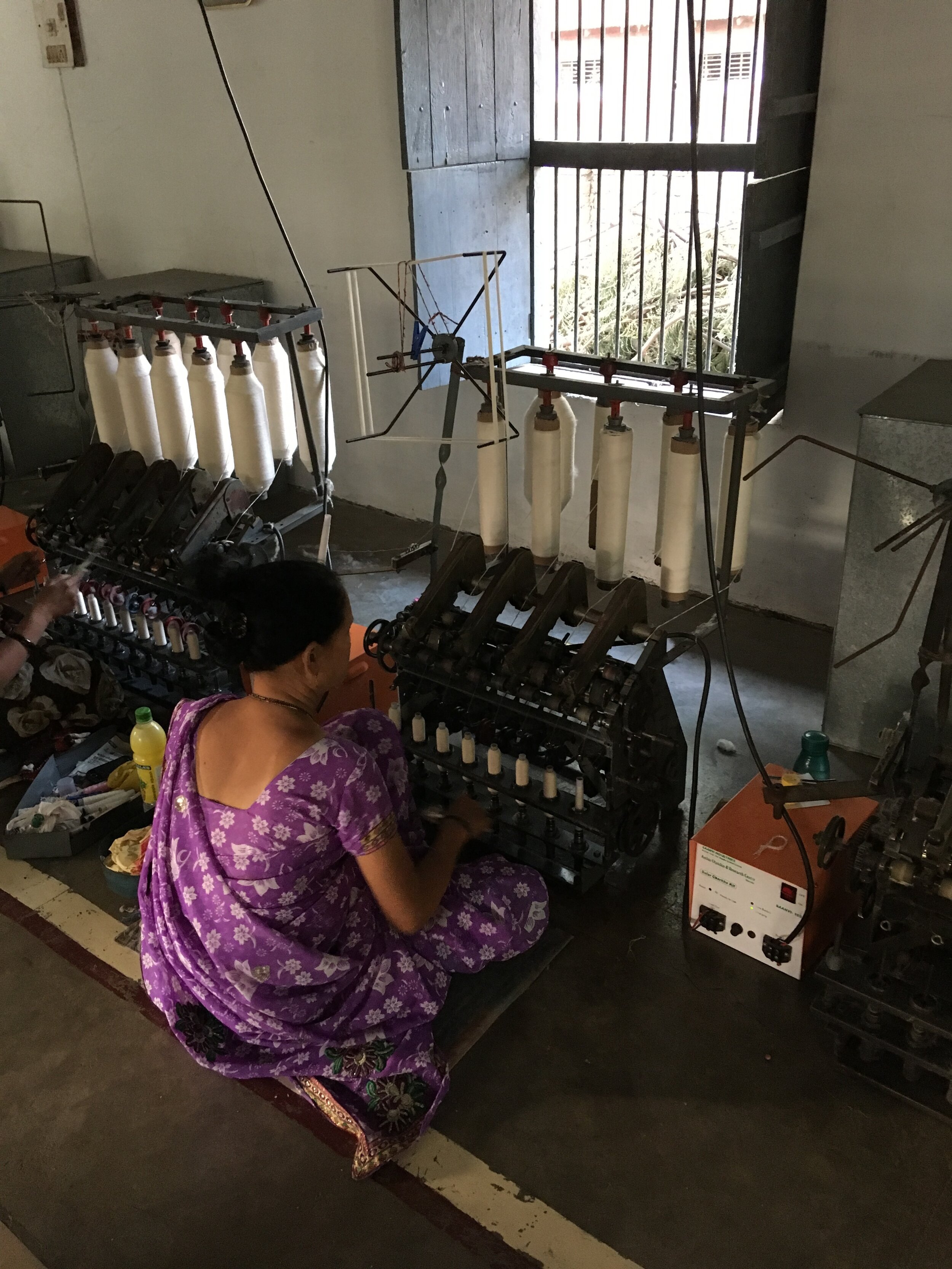KHADI
Khadi is the Indian name for cloth that is both hand spun and hand woven. It is usually made of cotton, but can be made of any spinnable natural fibre, such as wool or certain silks. Due to the fact that the fibres are spun by hand, khadi tends to have a ‘slubby’ appearance due to slight irregularities in the thickness of the threads. This slubbiness is what sets it apart from fabric made of machine-spun threads.
Gandhi’s Vision
Khadi has a fascinating history that stretches from Gandhi and the independence movement through to current debates regarding ethical production. Khadi was initially championed by Gandhi as a way for Indians to gain independence from the British colonial powers. Prior to the British conquest of India, India had a sophisticated textile industry based on villages that specialised in certain skills. All textiles were produced entirely by hand, which meant that textile production was a source of both widespread employment and regional pride.
After the colonial conquest, Britain effectively destroyed India’s textile industry by taxing its fabric and purchasing only its raw fibres, which it turned into fabric in Britain. It then sold the fabric back to India at rock-bottom prices, making it very hard for local cloth producers to compete. Gandhi’s freedom struggle used khadi as a symbol of economic independence. Followers were encouraged to boycott foreign cloth and wear only khadi in order to support the Indian economy. As well as representing financial freedom from Britain, khadi was a key part of Gandhi’s vision of sarvodaya, or the ‘welfare and upliftment of all’. He believed that economic development should benefit the many, not the few, and that the way to achieve this was through a decentralised economy, small-scale technology and a focus on local knowledge and resources. Khadi was seen by him as a key driver of this development.
Solar Khadi
Today, khadi remains a symbol and source of rural employment, employing millions of people across the country. It is a useful source of income in rural areas as it requires no electricity and little financial investment. It is also valued for its eco credentials as it is constructed entirely by hand and therefore does not make use of fossil fuels.
The downside of khadi is, of course, that it takes longer to produce than machine-made fabric. Although India has gained independence from Britain, khadi producers are still competing with machine-made fabrics, only this time they are Indian made. This has meant that although many rural people still produce khadi, the financial returns tend to be very low. In order to address this problem, some NGOs are promoting the use of ‘solar-spun’ khadi. This is made of threads that have been spun by small-scale machines running on solar power. Although the threads are not spun by hand, the machines can be easily operated by individuals and do not require any electricity, so they achieve many of the goals of the khadi movement. Due to the precision of the machines, the fabric tends to be more uniform than hand-spun khadi, which means that hand spinning retains its place as a source of artistic value. But the solar machines are filling an important economic gap and helping fulfill Gandhi’s dream of financially independent rural communities.
At Ecosophy, all of our decorative items, such as our blankets and cushion covers, are made of hand-spun khadi. What this means is that the whole production process - from the spinning of raw fibres into threads to the weaving and dyeing of the fabric - has been done by hand, resulting in beautiful textures and patterns.
To shop the khadi collection, click here.






